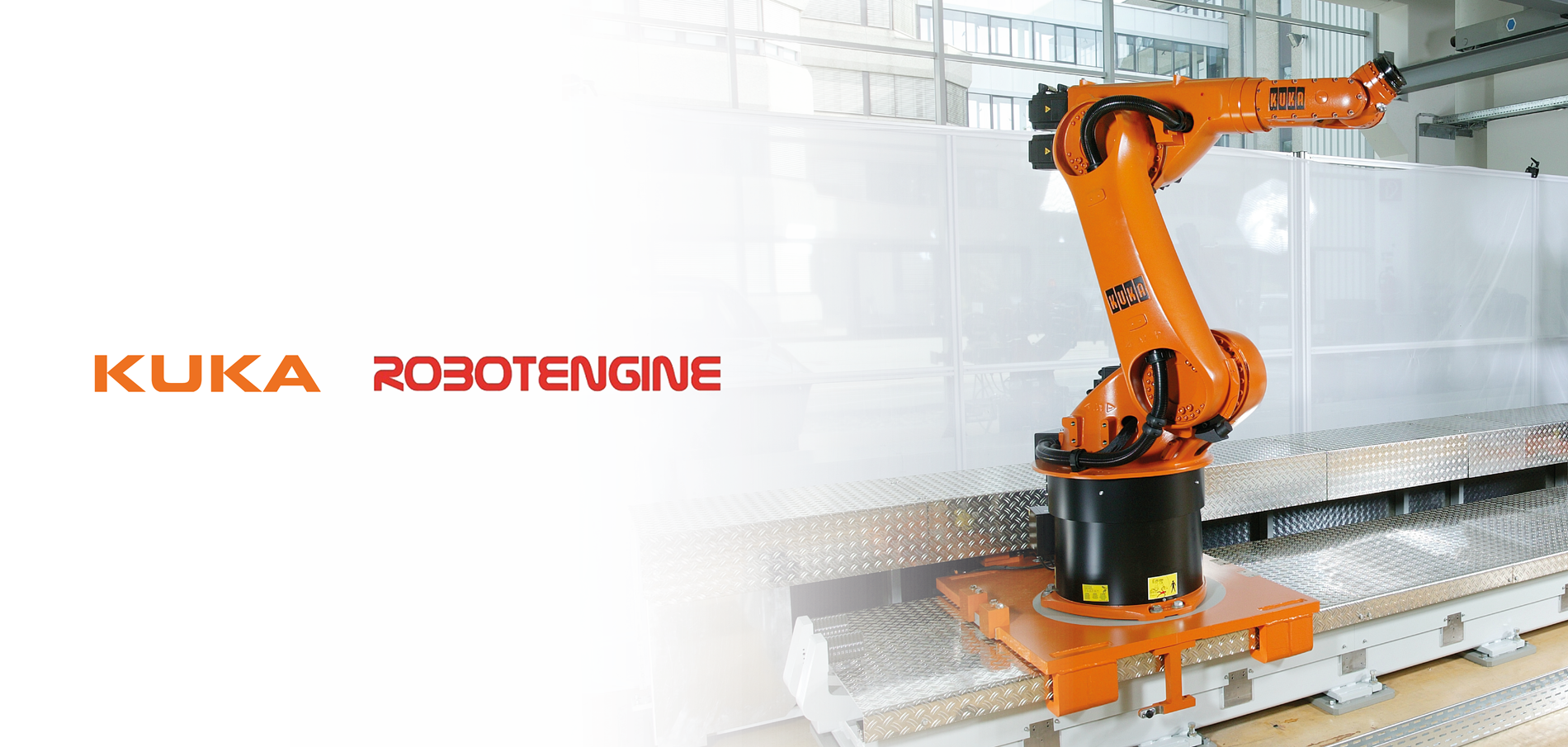The ‘Seventh Axis’ is a recent phenomenon in the sphere of robotic-automation, with a promise of maximising returns for manufacturers, the world over. In the UK and Ireland, the use of ‘linear tracks’ for robots is growing in popularity; to gain insight on how this is being implemented in South Africa (the most recent addition to KUKA UK’s geographic market-cluster) we spoke to Andre Botha and Eugene ‘Titch’ Taylor from our Silver system-partner ‘ROBOTENGINE’.
Read the first of our two part, insightful discussion, below...
Robot manufacturers and integrators often throw around terms like “linear tracks” and the “Seventh Axis. Could you please explain what these are and how they can feature in automated manufacturing?
Andre:
Let’s begin by splitting this explanation down to two parts. For starters, at their core, ‘linear tracks’ provide a means to move the robot around and its parts - making them more accessible from all areas, in addition to expanding the envelope of a robotic arm. A rotary table, on the other hand, just gives more access to a part, as the configuration of a robot cannot reach certain parts. With a rotary table, you can simply rotate the table and get access to the parts you need.
What would you say the overall cost and application benefits of implementing ‘linear tracks’ in robotic automation are?
Andre:
Mainly just increasing the ‘work-envelope’ and part-accessibility.
Titch:
Also, our clients who implement ‘linear tracks’ find that they need to integrate less robots into their manufacturing processes as well. It can be quite complicated for those who are trying to do one piece of work, with three or four robots, when they can just move the robots via ‘linear tracks. Consequently, from a long-term cost-benefit, there is less machinery to replace.
It can be argued that people are generally not au fait with the benefits of linear tracks. Why do you think this is?
I wouldn’t say there's a lack of awareness - I'd say it's more a cost issue. I mean, ‘linear-track’ setups are basically doubling the cost of robotic-manipulators. That is why a lot of people steer clear of them, given their cost implications. If you think about it, when you start to exceed more than 6 metres of track, this amounts to the same size and cost of another robotic arm – as such, you may as well just buy another robotic arm and put two of them in a row, instead of putting one on a linear track. That way, you would then be increasing your output. It's only when you're getting out of the ‘work-envelope’ of two machines, that a ‘linear track’ really comes into its own. I think that's a lot of the argument that I get.
Titch:
It really does come down to cost. People look at these things and want a solution, so they'll come along and say: “how best do you think we should do it?”, to which they receive a response of “well, you should put the robot on the track”. This exchange will typically continue with the customer asking about price. Once they learn difference in cost, between choosing to integrate, or not integrate ‘linear tracks’, the latter choice comes out on top. I would describe it more as a “progressive purchase”, rather than an “every day, typical purchase”.
Do you find that there is still any resistance regarding automation coming into manufacturing facilities, or is this something that's becoming generally accepted, particularly in South Africa?
Andre:
That's a double-edged sword there, because obviously, there is a definite divide in the thought process. Yes, a lot of the workers do look at it as a bit of a threat, but ‘management’ views it as a “pretty much accepted tool”, so there is progress in this regard. One also needs to understand that there has been very little education in the ways of industry, for a large percentage of the South African working-population, which makes it challenging to promote the benefits of automation. Essentially, there is little understanding of how automation can benefit industrial processes relative to efficiency, throughput, profitability and just an overall improvement of working conditions. Instead, they carry hostility towards the prospect of automation, as a means of job-protection. On the worker’s side, there is most definitely a bit of resistance, but education does get around that. We find that slower implementation of automation allows reluctant workers an opportunity to digest the benefits, in their own time, leading to a process of general acceptance once these are realised. Having said that, I have found that the exact same attitude in places like Malaysia, so it’s not just a localised resistance on the work-floor, this is a worldwide notion held by workers who fear the loss of their jobs – even though this is not necessarily the case. They look at automated machines and think “Hang on a minute, this machine is taking my job” – they fail to realise that repetitive jobs obviously work better when conducted by machines and that this frees them up to do more stimulating processes, and/or further their education, to be able to operate the machines.
Titch:
Your average South African might possibly present the argument of robots replacing jobs. This is because they perceive the implementation of automation in industry on a micro-level – for instance, they may have assumptions that if 20 robots are implemented in a facility, then 20 people will immediately lose their jobs. Essentially, they do not see the bigger picture - that this work is basically being redistributed. This redistribution of work may not be in the form of physical labour, but will manifest as other skills, such as ‘logistics-management’ or upskilled operators’, for example. You cannot expect the average person to be an economist or accountant, however, so their argument will almost always be one of emotional ignorance.
Catch part two of this discussion on 04.07.22 when we understand the value attributed to investing in linear tracks.
Find out more about KUKA's linear tracks, here or discover more about ROBOTENGINE South Africa, here.



